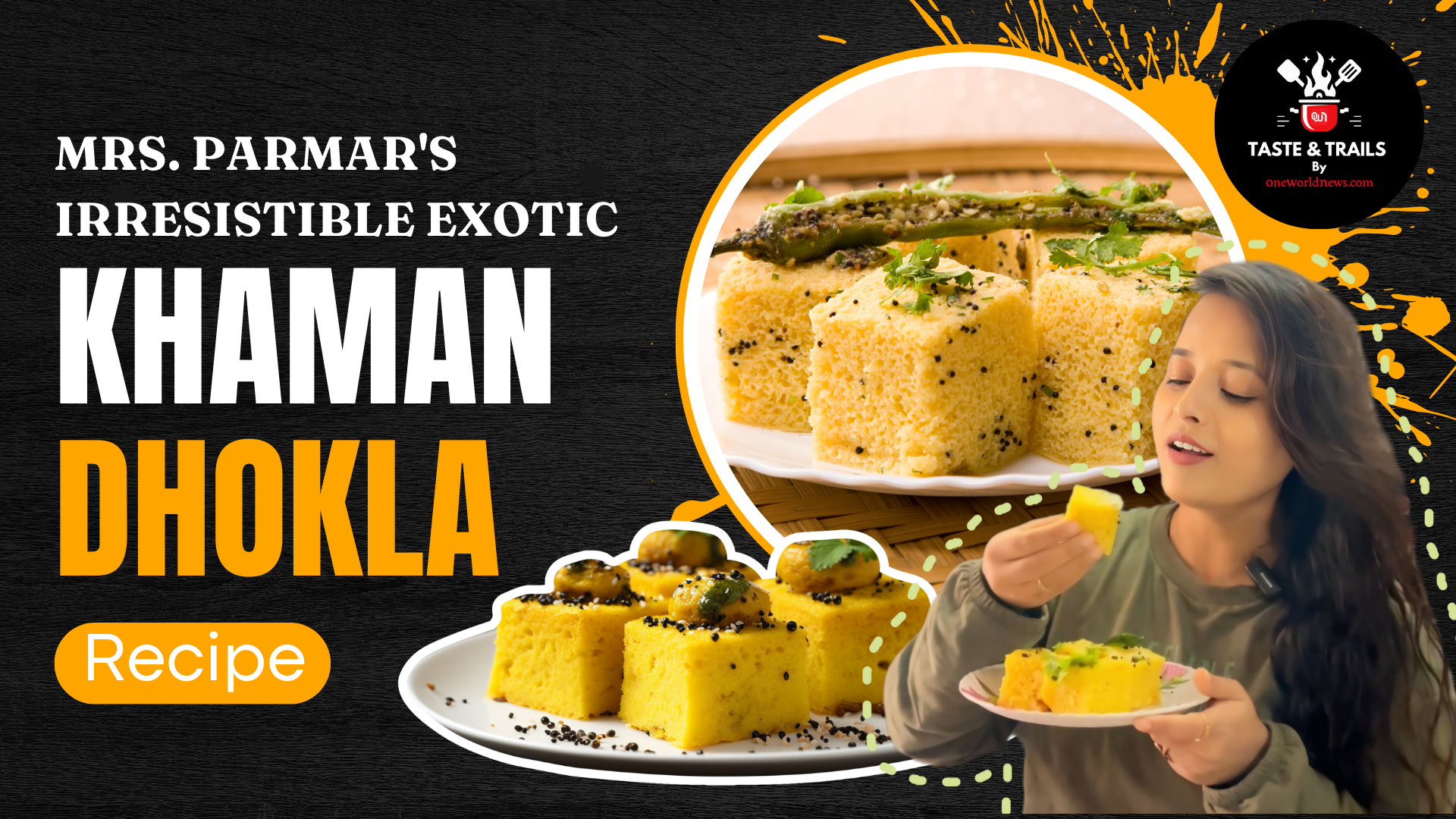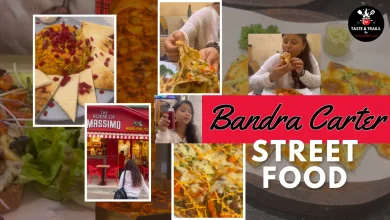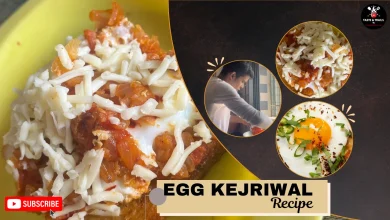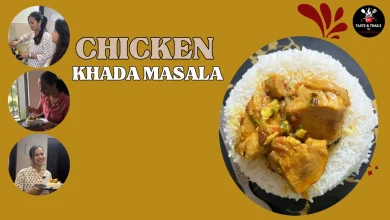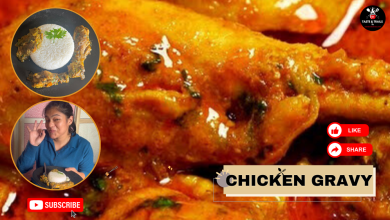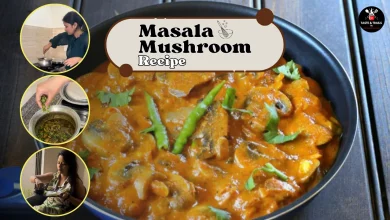From Pandemic to Plate: A Culinary Journey with Mrs. Parmar’s Flavorsome Khaman Dhokla Recipe
Priksha meets Mrs. Parmar to discover the secrets of making Khaman Dhokla Recipe, blending tradition and flavor while sharing the joys and challenges of home cooking.
Exploring Gujarati Delights: A Heartwarming Journey of Cooking Khaman Dhokla Recipe with Mrs. Parmar and Discovering the Joys of Tradition and Flavor
Introduction: Life in the Time of COVID-19
The global pandemic, COVID-19, turned our world upside down, forcing us to adapt to a new way of living. Amidst the chaos, fear, and uncertainty, many found solace in simple pleasures like cooking. For some, it was a means of survival; for others, it became a newfound passion. In this article, we follow Prishika, a food blogger, as she visits Mrs. Parmar, a Gujarati homemaker, and businesswoman, who discovered her love for cooking during the lockdown. Their meeting highlights the transformative impact of the pandemic and the joy that can be found in food.
The Pandemic’s Impact: A Tale of Worry and Enjoyment
As Prishika reflects on the pandemic, she acknowledges the immense difficulties people faced. COVID-19 brought with it a wave of fear, anxiety, and loss. However, it also provided an unexpected opportunity for many to reconnect with themselves and their loved ones. Amid the lockdown, people found new hobbies, revisited old ones, and spent more time with their families. For Mrs. Parmar, it was a time to rediscover her love for cooking—a passion that had always been there but had taken a backseat in her busy life.

A Visit to Mrs. Parmar’s Home: A Warm Welcome
When Prishika arrives at Mrs. Parmar’s home, she is greeted with the traditional Gujarati salutation, “Jay Shri Krishna.” The warmth and hospitality of Mrs. Parmar instantly make Prishika feel at home. As they sit down to chat, the conversation naturally turns to food, a topic that excites both women.
A Passion for Cooking: A Gujarati Legacy
When asked if she enjoys cooking, Mrs. Parmar beams with pride. “I am Gujarati,” she says, “and I have always loved cooking.” She explains that from a young age, she was encouraged by her mother to learn household chores, especially cooking. For Gujarati women, cooking is not just a task but a way of life, a tradition passed down from generation to generation.
Balancing Work and Home: The Life of a Businesswoman
Prishika is curious about how Mrs. Parmar manages to balance her career with her household responsibilities. Mrs. Parmar, who works in marketing for IMC, shares that she finds joy in both her official work and her household duties. For her, both aspects of her life have become passions. She believes that maintaining this balance is essential for her well-being and happiness.
The Khaman Story: A Lockdown Discovery
As the conversation progresses, the focus shifts to the culinary highlight of the day: Khaman. This steamed, savory cake made from chickpea flour is a quintessential Gujarati dish, and today, Mrs. Parmar is going to share her recipe with Prishika.
During the lockdown, like many others, Mrs. Parmar experimented in the kitchen. She recalls how she first attempted to make Khaman. “Initially, I failed several times,” she admits with a smile. “The dish didn’t turn out right, and my children even asked me to stop making it.” However, she didn’t give up. After watching YouTube tutorials and analyzing her mistakes, she finally perfected the recipe. The first successful batch was a hit with her family, especially her late husband, who loved the dish.
A Bittersweet Memory: The Taste of Love
As Mrs. Parmar reminisces about her late husband, there is a touch of sadness in her voice. She reveals that her husband’s favorite dish was Khaman, and every time she makes it, she is reminded of him. The memory is bittersweet, filled with love and longing. “I miss him a lot,” she says softly. “But life must go on.” Prishika, moved by her words, expresses her sympathy and admiration for Mrs. Parmar’s strength.
Cooking Together: The Khaman Dhokla Recipe
With emotions running high, the two women decide it’s time to head to the kitchen and start cooking. Mrs. Parmar is eager to share her Khaman recipe with Prishika, a dish that has now become her signature.

Read more: A Bengali Culinary Delight: Rimi Didi’s Mustard Hilsa Fish Recipe
Ingredients for Khaman Dhokla Recipe:
- 100 grams of Besan (chickpea flour)
- 1 tablespoon sugar
- A pinch of salt
- ½ tablespoon citric acid
- Water (for the batter)
- Ganesh Marka Mustard Oil (for greasing and tempering)
- 1 packet of regular flavored Eno (avoid lemon flavor)
- Mustard seeds
- Curry leaves
- 3-4 green chilies
- Coriander leaves (for garnish)
Step-by-Step Recipe:
- Preparing the Batter:
- Start by taking about 100 grams of besan and transferring it into a large mixing bowl.
- Add a pinch of salt, ½ tablespoon of citric acid, and 1 tablespoon of sugar.
- Gradually add water to the mixture and stir continuously to avoid lumps.
- The consistency should be smooth, and the sugar and salt should be fully dissolved.
- Once the batter is ready, cover it and let it rest for about 20 minutes.
- Steaming Setup:
- While the batter rests, prepare your steaming setup. Take a large pot or kadai, add water to it, and place a ring or an inverted bowl in the center.
- This will act as a stand for your plate. Allow the water to come to a boil.
- Mixing the Eno:
- After 20 minutes, your batter should have risen slightly and become fluffy.
- Add a packet of regular flavored Eno and a little water to activate it. Mix gently but thoroughly.
- The batter should be of medium consistency—not too thick, not too thin.
- Greasing the Pan:
- Grease the plate or any shallow pan with Ganesh Marka Mustard Oill. Make sure to grease it well to prevent sticking.
- Steaming the Batter:
- Pour the batter into the greased pan and place it on the stand inside the pot. Cover the pot with a lid.
- Steam the Khaman on medium-high heat for about 10-12 minutes.
- To check if it’s done, insert a knife into the center. If it comes out clean, the is ready.
- Preparing the Tempering (Tadka):
- While the Khaman is steaming, prepare the tempering. Heat some Ganesh Marka Mustard Oill in a small pan.
- Add mustard seeds and let them crackle. Then add curry leaves, chopped green chilies, and a pinch of citric acid.
- Add about ½ cup of water and 2 tablespoons of sugar. Let the mixture boil until the sugar dissolves completely.
- Once ready, set the tempering aside.
- Final Touch:
- After the Khamna is done, remove it from the pot and let it cool slightly.
- Cut it into square pieces using a knife dipped in the sugar syrup you prepared.
- Pour the remaining sugar syrup over the cut Khaman pieces, ensuring it seeps into every corner.
- Finally, garnish with chopped coriander leaves.

Tasting Time: A Culinary Success
Once the Khaman is ready, it’s time to taste. As Prishika takes her first bite, she is blown away by the softness and flavor of the dish. “This is better than anything I’ve had in the market,” she exclaims. For Mrs. Parmar, this is the ultimate compliment.
Ganesh Marka Mustard Oill: A Family Favorite
Curious about the oil used, Prishika asks why Mrs. Parmar prefers Ganesh Marka Mustard Oill. Mrs. Parmar explains that she has been using this brand for years. “It’s healthy and gives a great flavor to all my dishes,” she says. “My family loves the taste, and I trust it completely.”
A Gujarati Feast: Memories in Every Bite
As they sit down to enjoy the meal, the conversation turns to the rich culinary traditions of Gujarat. Mrs. Parmar shares that while Khaman is a staple, there are many other dishes she loves to cook, each with its own story and significance. For her, cooking is more than just making food; it’s about creating memories and honoring her heritage.
Conclusion: Finding Joy in the Simple Things
The visit to Mrs. Parmar’s home is more than just a culinary lesson; it’s a reminder of the simple joys of life. The pandemic may have changed the world, but it also brought people closer together, helped them rediscover old passions, and appreciate the little things. For Mrs. Parmar, cooking Khaman is not just about feeding her family—it’s a way of keeping the memory of her husband alive and passing down a cherished tradition to the next generation.
As Prishika leaves, she feels inspired not only by the delicious food but by the resilience and warmth of Mrs. Parmar. The world may have changed, but the love and passion for food remain as strong as ever.
We’re now on WhatsApp. Click to join
Like this post?
Register at One World News to never miss out on videos, celeb interviews, and best reads.

